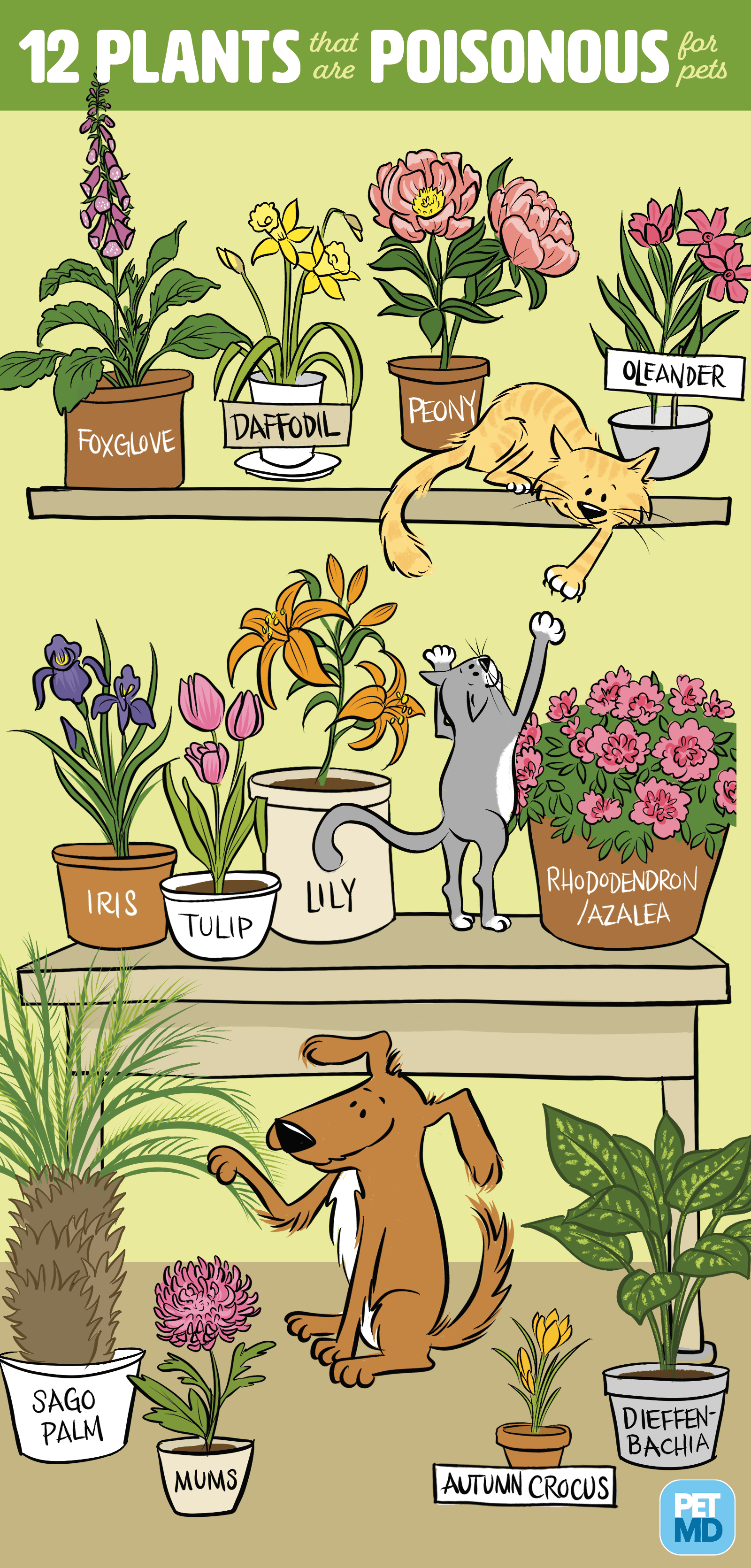Toxic Plants For Cats

Cats will chew on plants—and because they love to climb and explore, it can be difficult to keep plants out of your curious cat's reach. If you want to keep plants in your house, or if you let your cat out into your yard, you need to be able to accurately identify plants and flowers that are poisonous to cats. When in doubt, it is safest to remove a questionable plant from your home.
Common Plants and Flowers That Are Poisonous to Cats
Many toxic plants are irritants: they cause localized inflammation of the skin, mouth, stomach, etc. Other plants may have a systemic effect and damage or alter the function of a cat’s organs, like the kidney or heart.
Some common plants that are toxic to cats include:
- Amaryllis (Amaryllis spp.)
- Autumn Crocus (Colchicum autumnale)
- Azaleas and Rhododendrons (Rhododendron spp.)
- Castor Bean (Ricinus communis)
- Chrysanthemum, Daisy, Mum (Chrysanthemum spp.)
- Cyclamen (Cyclamen spp.)
- Daffodils, Narcissus (Narcissus spp.)
- Dieffenbachia (Dieffenbachia spp.) English Ivy (Hedera helix)
- Hyacinth (Hyacintus orientalis)
- Kalanchoe (Kalanchoe spp.)
- Lily (Lilium sp.)
- Lily of the Valley (Convallaria majalis)
- Marijuana (Cannabis sativa)
- Oleander (Nerium oleander)
- Peace Lily (Spathiphyllum sp.)
- Pothos, Devil’s Ivy (Epipremnum aureum)
- Sago Palm (Cycas revoluta)
- Spanish Thyme (Coleus ampoinicus)
- Tulip (Tulipa spp.) Yew (Taxus spp.)
Which Parts of the Plant Are Toxic to Cats?
If a plant is poisonous to cats, assume that all parts of the plant are poisonous, even though some parts of the plant may have higher concentrations of the toxin than others.
Toxic doses can vary widely from plant to plant. In some cases, ingesting a small amount can have devastating results, while for other plants, cats may need to be exposed to relatively large amounts of other plants before symptoms develop.

Symptoms to Watch For
Since many plants are irritants, most symptoms seen will be the result of irritation or inflammation, such as redness, swelling or itchiness of the eyes, skin or mouth.
Other symptoms include vomiting and diarrhea if the gastrointestinal tract is involved.
If the toxin directly affects a particular organ, the symptoms seen will primarily be related to that organ. For example:
- Difficulty breathing (if the airways are affected)
- Drooling or difficulty swallowing (if the mouth, throat or esophagus is affected)
- Vomiting/diarrhea (if the gastrointestinal tract is involved)
- Excessive drinking and urinating (if the kidneys are affected)
- Fast, slow, or irregular heart beat and weakness (if the heart is affected)
Immediate Care
If you see your cat eating a plant and you are uncertain if it is poisonous, or if you even suspect that your cat ate a toxic plant, do the following before you take him to your veterinarian:
- Remove any plant material from your cat’s hair, skin and mouth if you can do so safely.
- Keep your cat confined in a safe environment for close monitoring.
Identifying the plant is very important for determining treatment. If you are unsure of the name of the poisonous plant that your cat was exposed to, bring a sample of the plant or plant material with you to the veterinary clinic, including pieces of plant found in vomit.
Done by: Nurse Stephanie Pang
